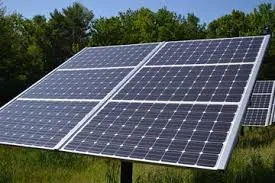monofacial vs bifacial
Monofacial vs. Bifacial Solar Panels A Comparative Analysis
As the global demand for renewable energy continues to rise, solar technology has become a focal point of innovation. Among the various options available, monofacial and bifacial solar panels are two prevalent types that have garnered attention from both residential and commercial users. Understanding their differences is key to making an informed choice that aligns with specific energy needs.
Monofacial Solar Panels
Monofacial solar panels are the traditional type of solar technology that many people are familiar with. These panels are designed with solar cells on only one side, typically facing the sun, while the back side is often covered with a protective layer. One major advantage of monofacial panels is their lower cost compared to bifacial panels. Manufacturing processes for monofacial panels are well-established, leading to higher production rates and cost efficiency.
However, monofacial panels do have limitations. Their energy generation is typically reliant on direct sunlight, and they may not capture the full spectrum of solar energy available in certain environments. This means that while they perform well in sunny, unobstructed areas, their efficiency can diminish in locations with partial shade or suboptimal sunlight conditions.
Bifacial Solar Panels
In contrast, bifacial solar panels feature solar cells on both sides, allowing them to capture sunlight from both the direct rays and reflected light from surrounding surfaces. This unique design enables bifacial panels to generate more electricity under various conditions, particularly in environments with a bright, reflective ground (like snow or sand). As a result, bifacial panels can produce up to 30% more energy than their monofacial counterparts.
monofacial vs bifacial

The ability to harness reflected light makes bifacial panels particularly useful in certain applications, such as solar farms or installations on rooftops with reflective surfaces. However, they are generally more expensive to produce and install, which can be a significant factor for budget-conscious consumers or small-scale users.
Factors to Consider
When deciding between monofacial and bifacial solar panels, several factors should be taken into account. The installation location plays a crucial role; areas with ample space for placing panels at optimal angles and with reflective surroundings might benefit from bifacial technology, whereas simpler installations in straightforward locations may find monofacial panels adequate.
Additionally, the initial investment versus long-term savings should be considered. While bifacial panels have higher upfront costs, their increased efficiency can lead to better returns on investment over time through savings on energy bills.
Conclusion
Ultimately, both monofacial and bifacial solar panels have distinct advantages and disadvantages. The choice between the two largely depends on specific energy needs, budget constraints, and environmental conditions. As technology continues to evolve, it’s likely that both types will play essential roles in the solar market, providing options for diverse consumers and applications. By weighing the pros and cons of each type, individuals and businesses can make informed decisions to maximize their investment in solar energy while contributing to a more sustainable future.
-
Understanding the Advantages of Solar String Inverters for Your Energy SystemNewsApr.29,2025
-
Choosing the Right PV Inverter: A Comprehensive GuideNewsApr.29,2025
-
The Future of Solar Power: Exploring Bifacial Solar PanelsNewsApr.29,2025
-
The Complete Guide to Solar Panels: Efficiency, Cost, And InstallationNewsApr.29,2025
-
The Best Options for Efficiency and Cost-EffectivenessNewsApr.29,2025
-
Harnessing the Power of Off-Grid Solar Inverters for Energy IndependenceNewsApr.29,2025







